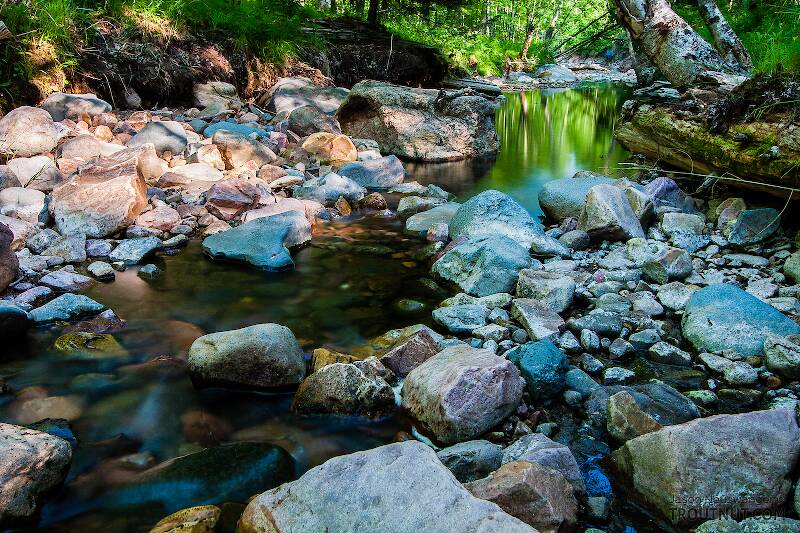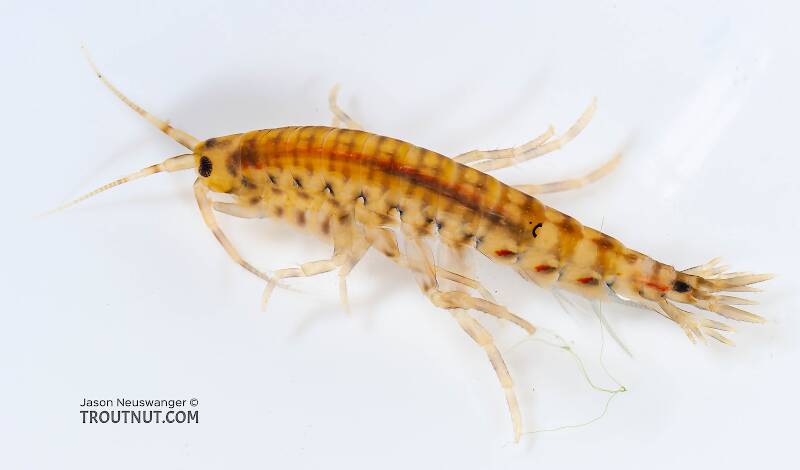
Blue-winged Olives
Baetis
Tiny Baetis mayflies are perhaps the most commonly encountered and imitated by anglers on all American trout streams due to their great abundance, widespread distribution, and trout-friendly emergence habits.
Featured on the forum

I was not fishing, but happened to be at an unrelated social event on a hill above this tiny creek (which I never even saw) when this stonefly flew by me. I assume it came from there. Some key characteristics are tricky to follow, but process of elimination ultimately led me to Sweltsa borealis. It is reassuringly similar to this specimen posted by Bob Newell years ago. It is also so strikingly similar to this nymph from the same river system that I'm comfortable identifying that nymph from this adult. I was especially pleased with the closeup photo of four mites parasitizing this one.

Troutnut is a project started in 2003 by salmonid ecologist Jason "Troutnut" Neuswanger to help anglers and
fly tyers unabashedly embrace the entomological side of the sport. Learn more about Troutnut or
support the project for an enhanced experience here.
Scuds
Scuds are not insects but small crustaceans, sometimes called freshwater shrimp, and in some streams they are a primary food source for trout. They grow quickly and can survive in a variety of habitats, but they are most prolific and important to trout in slow, weedy spring creeks. Unlike most aquatic insects, they never "hatch" into a dry form.
This common name refers to only one order. Click its scientific name to learn more.
Arthropod Order Amphipoda
These are pretty much always called Scuds.
Scuds can be an extremely important trout food source. They are often the most abundant aquatic macroinvertebrate in their habitat.
They are crustaceans so they don't go through the same life-cycle complications as aquatic insects. They start out as small scuds, grow to be big scuds, and die. The most significant family to anglers is Gammaridae with the species of the Gammarus genus heading up the list. The smaller Hyalella species of the Talitridae can also be important.
Though they all share the same silhouette, they can come in a surprising variety of sizes and colors. They run from size 8 to as small as you wish to imitate. The most common colors are olive or tan, though they can be found with yellow or gray base colors as well. Shading is often illusive to describe with highlights of pink, orange, green and even blue at times. It pays for anglers to notice both size and color differences in the waters they fish.
They are crustaceans so they don't go through the same life-cycle complications as aquatic insects. They start out as small scuds, grow to be big scuds, and die. The most significant family to anglers is Gammaridae with the species of the Gammarus genus heading up the list. The smaller Hyalella species of the Talitridae can also be important.
Though they all share the same silhouette, they can come in a surprising variety of sizes and colors. They run from size 8 to as small as you wish to imitate. The most common colors are olive or tan, though they can be found with yellow or gray base colors as well. Shading is often illusive to describe with highlights of pink, orange, green and even blue at times. It pays for anglers to notice both size and color differences in the waters they fish.
See 3 more specimens...


